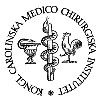Press release

KAROLINSKA INSTITUTET
October 1972
Karolinska Institutet has decided to award the Nobel Prize in Physiology or Medicine for 1972 jointly to
Gerald Maurice Edelman and Rodney Robert Porter
for their discoveries concerning “the chemical structure of antibodies”.
Antibodies is the collective name of a group of blood proteins that play an important part in the defense against infections and in the development of several different diseases. Up to the year 1959 our knowledge of their nature and mode of function was very vague and incomplete, in spite of a century of research. This year, however, Edelman and Porter independently presented the first results of investigations that within a few years were to lead to a practically complete clarification of the most essential questions concerning the nature of these substances.
Antibodies form giant molecules and for this reason a study of them is difficult. In order as far as possible to facilitate their task both scientists looked for methods to split the large molecules into well defined fragments that, it was hoped, would prove to be more easily handled.
Porter aimed at separation of those parts of the molecule that are responsible for the capacity of the antibody to react specifically and combine with that foreign substance, that antigen to which it is specifically fitted. He found that this indeed could be done with the aid of the protein splitting enzyme papain. For several reasons it had earlier been assured that the most common type of antibody would carry two identical combining sites. Porter in fact found that the molecule split into three fragments, two smaller very similar ones, both with capacity of combining with the antigen, and one larger one lacking this capacity.
Edelman’s point of departure was the assumption that the antibody like most biologically active proteins might be composed of a number of chain structures, held together by cross-links of some kind, most probably sulfur bonds. Therefore he tested methods that might cause breaks of such cross-links and he succeeded in dividing the molecule into several separate chains. None of these fragments had retained the specific reactivity of the antibody.
Later both Porter and Edelman could show that the antibody molecule is composed of two pairs of chains, two so-called “light” ones and two about twice as long “heavy” chains. Porter was then able to build a model of the molecule which has since been generally accepted and successively fitted with additional details. According to Porter the antibody molecule is shaped like the letter Y. The two branches are formed each by one light and the fore part of a heavy chain; in the stem the remainder of the heavy chains are to be found. The various chains run side to side, held together by a number of sulfur links. Thus the capacity of specific combination, which is associated with the structure of the tips of the branches, rests on a co-operation between the free ends of the light and the heavy chain, each one by itself inactive.
There exist several main classes of antibodies with different functions and characteristics. All of them carry principally the same kind of light chains, whereas the heavy ones are characteristic of each class. The hind parts of the heavy chains in the stem of the Y determine certain features of the antibodies’ behavioral patterns, i.e. the capacity of activating the so-called complement system which for instance can dissolve and destroy cells or microorganisms with which the antibody has reacted. In this region, furthermore, those chemical groups are located which determine whether the antibody will be able to penetrate certain membranes, e. g. through the placenta from mother to fetus.
The impact of Edelman’s and Porter’s discoveries is explained by the fact that they provided a clear picture of the structure and mode of action of a group of biologically particularly important substances. By this they laid a firm foundation for truly rational research, something that was previously largely lacking in immunology. Their discoveries represent clearly a break-through that immediately incited a fervent research activity the whole world over, in all fields of immunological science, yielding results of practical value for clinical diagnostics and therapy.
Nobel Prizes and laureates
Six prizes were awarded for achievements that have conferred the greatest benefit to humankind. The 14 laureates' work and discoveries range from quantum tunnelling to promoting democratic rights.
See them all presented here.
